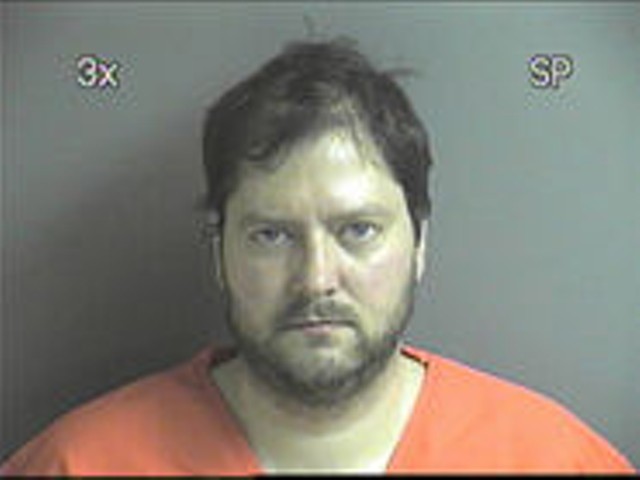"Walk like a panther," Hackney suggests, and the couples, all of whom are on the far side of 50 years old, let out a collective giggle and mimic a feline strut. They're dancing the tango.
And improving their health.
For the past seven months, researchers at the Department of Physical Therapy at Washington University have been studying a seemingly odd treatment for those afflicted with Parkinson's disease: the tango. The national dance of Argentina, known for its fluid, sensual movements, might prove effective in combating the debilitating disease.
"I'm getting out on the floor with people who hadn't danced in 30 years. They didn't think they could, and they're saying, 'I can't believe I can do this,'" says Dr. Gammon Earhart, an assistant professor of physical therapy who, along with Hackney, initiated the groundbreaking study.
The pair launched the pilot program this past June, not long after reading an abstract delivered at a Society for Neuroscience conference. The paper described a study of frail, physically unstable elderly patients. One group was treated with a traditional exercise regimen and the other was taught the tango. After learning and practicing the dance, the latter group was found to have improved balance. The results prompted Hackney and Earhart to wonder whether the same could be true for patients with Parkinson's.
Gammon and Hackney — the latter a Wash. U. doctoral candidate in motion science and former professional dancer who has appeared in the films Mona Lisa Smile and Mad Hot Ballroom — devised a regimen that would involve a traditional-exercise group and a tango group, and proceeded to enlist Parkinson's patients to participate. While both groups showed improvements, those doing the tango showed dramatic progress in both balance and mobility.
Pleased with the results, Earhart and Hackney are applying for funding from the National Institutes of Health to continue their research — this time with a larger contingent of participants, aiming to examine what particular aspects of tango are relevant to Parkinson's. A second study is scheduled for summer; the scientists are seeking participants, who must be over 60 but can be afflicted with Parkinson's or Parkinson's-free.
Approximately 1.5 million Americans have Parkinson's, a neurological disorder that can destroy nerve cells in the brain. The disease targets cells that produce dopamine, a chemical that allows for the smooth, coordinated function of the body's muscles. A lack of dopamine causes the symptoms of Parkinson's: tremors, rigidity and lack of balance. Actor Michael J. Fox and boxing great Muhammad Ali are probably the two most prominent Americans with Parkinson's.
Earhart says people with the disease have difficulty initiating movement. But if they're given an external cue, such as a beep, and asked to perform an action after hearing it, they're much more able to respond.
"Music may be one of those external cues," Earhart speculates. "You step to the beat, and that helps you. Another possibility is that with tango you've got a partner who's the cue. You're moving toward your partner, who is helping to facilitate the movement in some way."
The tango, Earhart adds, includes many turning maneuvers, a task that's particularly difficult for those with Parkinson's. "A lot of people, if you walk with them in a straight line and say, 'OK, let's turn around and go back the other way,' they just fall apart. In the middle of walking, they just stop. If you ask them what's happening, they describe feeling their feet being glued to the floor. Their feet aren't actually obeying what the brain wants them to do."
The researchers believe that dance in general may prove to be a good treatment. In fact, for the past six years members of the Brooklyn Parkinson Group in New York have been working with the Mark Morris Dance Center, says Ruth Hagestuen, director of field services for the National Parkinson Foundation.
"People have told me that it's been so absolutely significant in their lives," Hagestuen says. "They can move better when they dance than if they're just trying to walk down the hall." Hagestuen believes dance works well because it emphasizes a strengthening of the body's core. "There's something about music that reaches people," she adds. "We used to think that it was just the beat, but I think it's more than that."
"It's a completely joyful experience," Hackney says of teaching the tango. "Every week I look forward to the class." Though the pilot program officially ended in October, she and Earhart continue to meet weekly with the group.
"One of the reasons I like it is because my spouse can participate with me," says Marge Bilinsky, who has Parkinson's and attends the sessions with her husband Herb. "It's a couples thing, and it's fun. Neither of us danced much. Herb's not really a big dancer at all, so I was delighted that he said that he would come."
"It's amazing," confirms Ute Adelt, whose husband, Wilfried, has Parkinson's and participated in the Wash. U. study. "Before, my husband couldn't even think about going backwards, but now he can. I mean, he's not jumping, but it's such an improvement."
Ute and Wilfried Adelt used to dance frequently. "We're European, so it's more or less mandatory," she explains, laughing. "But since he has Parkinson's, we couldn't even dream about dancing. And then all of a sudden he can again — slowly."
Indeed, as music fills the room, Wilfried and Ute move in balletic unity. Though his head and arms shift and contort against his will, Wilfried's blue eyes sparkle as his legs glide with grace.
Ute recalls a recent evening spent tangoing in Webster Groves. "We danced our little hearts out, just for the fun of it. Before, he wouldn't have felt comfortable. But it really gives him confidence, and it's marvelous."
Contact the author
[email protected]





